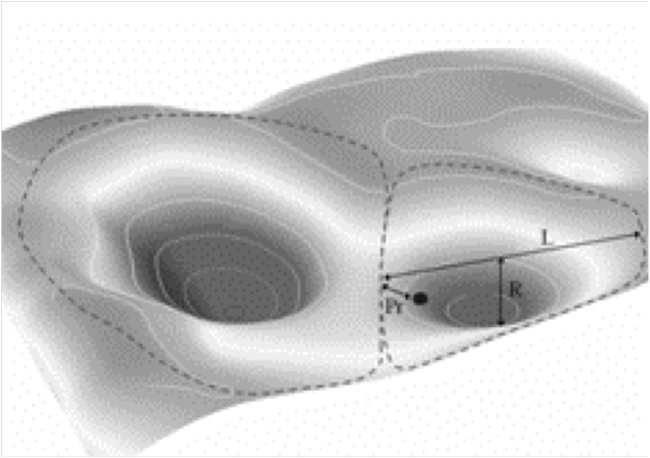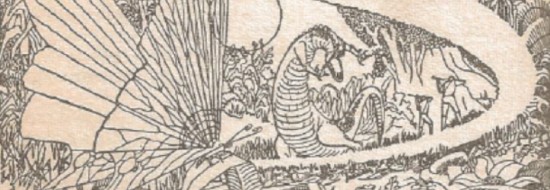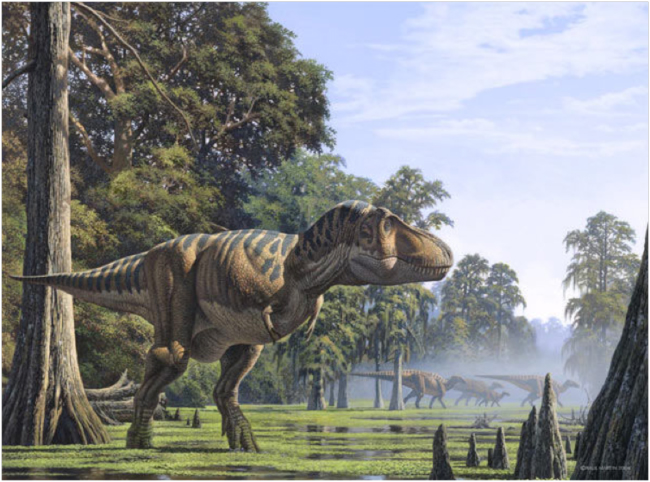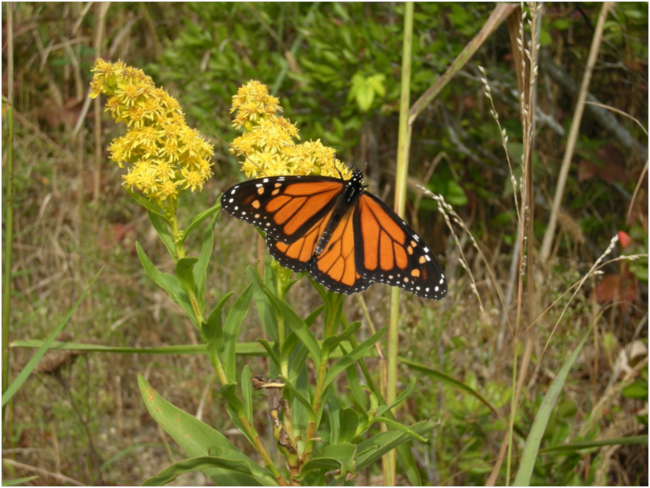January 2016. My flight to Denver from Washington’s Dulles Airport was on time on December 15th, even though the previous United flight had been cancelled by a hard-striking snowstorm in Colorado. A low, white blanket of patterned clouds covered the country almost from takeoff, and we descended into Denver at dusk through low snow clouds to a surreal scene of snow covered runways, scurrying snowplows, orange-pink mercury-vapor lights, and a chilly nineteen degrees Fahrenheit.
Two days later, with the storm past and the roads almost dry again under a sharp Colorado winter sun, I drove up the winding road from Boulder to the National Center for Atmospheric Research, NCAR – pronounced as an acronym “n-car” by everyone here. NCAR sits under the sudden, uptilted sandstone foothills of the Front Range of the Rocky Mountains, eroded here into scenic formations called the Flatirons. This national research center occupies a unique building designed by the famous architect I.M. Pei, who later designed the East Wing of the National Gallery of Art in Washington, where I now live. His design is unique and striking, supposedly his fusion of images from southwestern Pueblo architecture and the local geology represented by the Flatirons themselves. Although unique and striking, to me it sticks out as a bit of a “sore thumb” in the otherwise natural landscape above the city of Boulder, which soon after NCAR was built banned any further development in the viewshed of its scenic city backdrop.
I went to NCAR on my last trip to Boulder in July, and saw, among the museum-like educational displays in its sprawling lobby, a multiple-pivot pendulum that creates a visual image of “chaos.” The pendulum had been haunting me since then, and I wanted to see it again. The sign describing the pendulum said: “Spin the brass knob [to start the pendulum spinning and swinging] and watch the movement of the swinging arms.” We did. The resulting dance of the pendulum’s arms was captivating, almost hypnotic; surprising and smile-inducing; unpredictable, whacky, and, well… chaotic! Every spin produced a unique dance. The interpretive sign explained further, under the heading “What’s going on?”: “It’s easy to predict the motion of a single pendulum. [so “easy” and regular, in fact, that these were the basis of our grandfathers’ clocks!] The motion of this large pendulum is more complex because it has smaller pendulums attached to it. Each of these pendulums influences the motions of the others, making the overall motion chaotic and unpredictable.”
The sign continued: “If you could start the pendulums swinging exactly the same way each time, they would always do exactly the same thing. But tiny differences in the way you start them can add up to drastic changes in their later motions. This extreme sensitivity to starting conditions is characteristic of chaotic systems.”
Then on the sign came a heading “So what?” That explained what this whacky chaotic pendulum had to do with the National Center for Atmospheric Research: “Tiny changes in the weather can also have drastic effects. A slight change in atmospheric pressure or wind direction, for instance, can turn a beautiful, sunny day into a dreary, cloudy day.”
——-
Another display in the NCAR lobby was about weather forecasting, and was headlined “How well can we do?” It echoed the message from the chaotic pendulum display, saying that “The Earth’s atmosphere follows laws of physics, which makes weather predictable. But it is also a complex system where small changes can grow into big changes, which means it is chaotic. Chaos is normal, but it means that weather forecasts can never be perfect. Even the smallest variations in the atmosphere – too small to measure – can grow into large changes in future weather. This is why weather forecasts for two weeks from now will always be less reliable than forecasts for the next three days.”
Out of my deep memory, the issue of weather forecasting and “three days” rose up. Just after college, I spent a year in Los Alamos where I grew up, earning money for some international travel and for graduate school by substitute teaching. Every month or so my dad would take me to a lecture by some famous scientist who happened to be passing through the famous national laboratory in my home town. I clearly remember a lecture by a nationally-known meteorologist, whose bottom-line message was that the atmosphere was such a complex system that any scientific “forecast” beyond three days would be equal to guessing that the weather on the fourth day would be just like today. It was my first glimpse of the then just emerging ideas of chaos theory, and it stuck with me because it shook up my previous view that science could eventually understand and predict everything. In retrospect, I think the idea of unpredictability somehow stimulated and delighted me.
That lecturer, if I am right, was Edward N. Lorenz, of the Massachusetts Institute of Technology, M.I.T., a mathematical meteorologist and pioneer of chaos theory. The year was probably 1973 or 1974. At NCAR, I was fascinated to learn that in all these decades since then, the science of “three days” of predictability hasn’t changed – and I was secretly delighted again.
If you google “the butterfly effect,” you will find a Wikipedia entry that says:
“In chaos theory, the butterfly effect is the sensitive dependence on initial conditions in which a small change in one state of a deterministic nonlinear system can result in large differences in a later state. The name of the effect, coined by Edward Lorenz, is derived from the metaphorical example of the details of a hurricane (exact time of formation, exact path taken) being influenced by minor perturbations such as the flapping of the wings of a distant butterfly several weeks earlier. Lorenz discovered the effect when he observed that runs of his weather model with initial condition data that was rounded in a seemingly inconsequential manner would fail to reproduce the results of runs with the unrounded initial condition data. A very small change in initial conditions had created a significantly different outcome.”
In his 1963 paper The Predictability of Hydrodynamic Flow, Lorenz wrote:
“One meteorologist remarked that if the theory were correct, one flap of a sea gull’s wings would be enough to alter the course of the weather forever. The controversy has not yet been settled, but the most recent evidence seems to favor the sea gulls.” In later talks and scientific presentations, Lorenz shifted the metaphor from seagulls to butterflies, perhaps thinking that butterflies were more charismatic or poetic than seagulls. The title of a talk he gave at the 1972 meeting of the American Association for the Advancement of Science was “Does the Flap of a Butterfly’s Wings in Brazil Set Off a Tornado in Texas?”
——-
But in fact, the idea of a “butterfly effect” had embedded itself in my mind many years before I heard Lorenz’s lecture in Los Alamos. For me, the idea came originally from reading a short story by Ray Bradbury, A Sound of Thunder.
That story was first published in 1952, and included in a 1953 collection, The Golden Apples of the Sun. I first read it when I was in high school. I bought the book in a small bookstore in the Winrock Mall in Albuquerque, New Mexico, on one of the monthly shopping expeditions I was obligated to make from Los Alamos with my family, where there was only one department store in town, and no bookstores at that time. I would have gone crazy on those shop ‘til you drop Saturdays in Albuquerque without that little bookstore. The yellowing pocketbook copy of the third printing of the book, by Bantam Books, 1967, is still on my bookshelf.

Scan of the illustration for A Sound of Thunder from my 1967 Bantam Books edition of Ray Bradbury’s The Golden Apples of the Sun.
Bradbury was a master of the short story form, and his opening hooks you in immediately:
“The sign on the wall seemed to quaver under a film of sliding warm water. Eckels felt his eyelids blink over his stare, and the sign burned in this momentary darkness:
TIME SAFARI, INC.
SAFARIS TO ANY YEAR IN THE PAST.
YOU NAME THE ANIMAL.
WE TAKE YOU THERE.
YOU SHOOT IT.”
Eckels, an obsessive big game hunter of the future, decides to go on a time safari to shoot a Tyrannosaurus rex. As he is about to enter the Time Machine, Bradbury foreshadows what is to come in a few pages.
“A real Time Machine!” Eckels says. “Makes you think, if the election had gone badly yesterday, I might be here now running away from the results. Thank God Keith won. He’ll make a fine President of the United States.”
The hunters and their time-safari guides travel back to the world of the Jurassic. The Time Machine hums to a stop, and the door opens. Their guide, Mr. Travis,
“indicated a metal path that struck off into the green wilderness, over steaming swamp, among giant ferns and palms. ‘And that,’ he said, ‘is the Path, laid by Time Safari for your use. It floats six inches above the earth. Doesn’t touch so much as one grass blade, flower, or tree. It’s an antigravity metal. Its purpose is to keep you from touching this world of the past in any way. Stay on the Path. Don’t go off it. I repeat. Don’t go off. For any reason! If you fall off, there’s a penalty. And don’t shoot any animal we don’t okay.’
‘Why?’ asked Eckels.
‘We don’t want to change the Future. We don’t belong here in the Past… A Time Machine is damn finicky business. Not knowing it, we might kill an important animal, a small bird, a roach, a flower even, thus destroying an important link in a growing species.’”
The hunters go out on the path. They encounter, of course, T. rex. Eckels, terrified by the beast, inadvertently steps off the path. The dinosaur finally goes down to the hunters bullets, but back at the Time Machine,
“Eckels… fumbled crazily at the thick slime on his boots. He held up a clod of dirt, trembling. ‘No, it can’t be. Not a little thing like that. No!’
Embedded in the mud, glistening green and gold and black, was a butterfly, very beautiful, and very dead.
‘Not a little thing like that! Not a butterfly!’ cried Eckels.
It fell to the floor, an exquisite thing, a small thing that could upset balances and knock down a line of small dominoes and then big dominoes and then gigantic dominoes, all down the years across Time. Eckels’ mind whirled. It couldn’t change things. Killing one butterfly couldn’t be that important. Could it?
His face was cold. His mouth trembled, asking: ‘Who – who won the presidential election yesterday?’”
Well, you will have to read A Sound of Thunder to find out.
Whenever I have walked on boardwalks or boardwalk trails built over swampy, wet places, I’ve thought of A Sound of Thunder. On Washington’s Olympic Peninsula while doing work on my doctoral thesis I frequently hiked the trail from Ozette to Cape Alava in the Olympic National Park, miles of which is boardwalked over the sodden ground of the temperate rainforest. I don’t remember seeing many butterflies, but my mind was somehow always waiting for the sudden scream of a Tyrannosaurus rex.
——-
A corollary of the butterfly effect is the “precautionary principle.” This principle basically cautions against taking risks that may have negative consequences of unknown magnitude. It’s really nothing more than carrying forward into the realm of modern science and policy the old human experience and wisdom captured in sayings such as “better safe than sorry,” “look before you leap,” or “an ounce of prevention is worth a pound of cure.” In chaotic, complex systems, where predicting outcomes is iffy, the precautionary principle urges a high level of conservatism. If it ain’t broke… don’t mess with it.
In college, one of my professors, Paul Ehrlich, told a story he called “the airliner and its rivets.” It was a very powerful image for me and has stuck with me ever since. “Imagine you are settling in for a flight, in a window seat where you can see the wing,” Ehrlich said in one of his lectures. “You see a guy with a crowbar out there, pulling rivets out of the wing, and, of course concerned, push the call button for the flight attendant. ‘Excuse me, but there’s a guy out there pulling rivets out of the wing!’ you tell her excitedly. ‘Oh, don’t worry about that,’ she replies; ‘he’s been doing that for quite awhile, and there haven’t been any problems yet.’” OK, Ehrlich asked us: what do you do? Ignore it and start reading the airline magazine? Or bolt for the door before it is closed, and refuse to fly on that plane?
Then he explained his analogy. For centuries, even millennia, humans have been causing the extinction of other species through their actions, whether it was hunting the Pleistocene megafauna to extinction, or converting large tracts of natural ecosystems to our extremely simplified agricultural ecosystems. “Those species,” Ehrlich said, “are the rivets of Spaceship Earth. So… what are you going to do? Take another flight?” We all chuckled uncomfortably. For me, and for at least a dozen others in that class, I’m sure, our lives and careers took an instant turn, and we knew that what we really wanted to do was to figure out how to stop the guy who was pulling out the rivets. The challenge was, and is, he was us, we were him.

Spaceship Earth as seen on July 6, 2015 from a distance of one million miles by a NASA scientific camera aboard the Deep Space Climate Observatory spacecraft.
At some point in my graduate studies I read the thought-provoking work of ecologist James Estes and his colleagues, “Aleuts, Sea Otters, and Alternate Stable-State Communities.” This was my first glimpse into the ecological fact that, rather than only slowly changing from one state to another through gradual ecological “succession,” ecosystems could sometimes “flip” from one state or condition to a dramatically different one, and sometimes very rapidly. The changes in near-shore ecosystems in the Aleutian Islands, caused by human decimation of sea otter populations, were the case-in-point discussed by Estes et al. in their 1978 article in Science. This topic is a staple of ecological research now. Much more recently, in my consulting work, I’ve become immersed in the ecological concept of “resilience,” first discussed in a 1973 paper by C.S. Holling titled “Resilience and Stability of Ecological Systems.” The concept of ecological resilience, especially related to human-caused climate change, is also now a central theme of ecological research. These topics link ecology with chaos theory, with the butterfly effect, and with the precautionary principle.

“Stability landscape” diagram from Walker, et al., 2004 (see my blog “Pondering the Ponds of Nags Head Woods.”)
I still marvel at the insightful mind of Ray Bradbury, who first introduced me to the “butterfly effect” and its potential eco-evolutionary, socio-political consequences. How did he make the leap between chaos theory, as applied to pre-human biological evolution, and human social and cultural evolution. It was an amazing, insightful leap. Probably, if I were honest, I could say that my entire career was influenced by reading A Sound of Thunder, and listening to Paul Ehrlich’s story of “the airliner and its rivets.”
——-
A corollary of chaos theory and the precautionary principle is the principle that little things matter. Which means that what we do, and what we choose to do, can be one of those tiny and seemingly insignificant things that can amplify over time and create a drastically different outcome. We probably can change the future, for better or worse. It’s something worth thinking about, as we start into the first new year after the Pope’s Encyclical “Laudato Si’: On Care for Our Common Home,” the first new year after the Paris Climate Agreement, the first New Year after the last new year for all of us on this sacred Spaceship Earth.
“Sensitive dependence on initial conditions.” Isn’t that what all our lives are about? “Chaos is normal.” If we agree that this is so, shouldn’t we start paying closer attention to staying on the Path, so we don’t step on that butterfly whose flap of the wings, if it lives, will surely change our future?
For related stories see:
- A Pilgrimage to the Monarch Butterfly Overwintering Refuges In Michoacán, Mexico
- Pondering the Ponds of Nags Head Woods
- Laudato Si’: The Pope’s Encyclical on Care for Our Common Home
Sources and related links:
- National Center for Atmospheric Research
- How to make your own chaotic pendulum
- Butterfly effect
- The Predictability of Hydrodynamic Flow. Edward N. Lorenz. 1963.
- Predictability: Does the Flap of a Butterfly’s Wings in Brazil Set Off a Tornado in Texas? Edward N. Lorenz. 1972
- A Sound of Thunder. Ray Bradbury. 1952.
- Artist’s rendition of Tyrannosaurus rex from Dinopedia
- T. rex from kids.nationalgeographic.com
- The Rivet Poppers. Paul and Anne Ehrlich. Preface to Extinction: The Causes and Consequences of the Disappearance of Species. 1981.
- Earth as seen on July 6, 2015 from a distance of one million miles by a NASA scientific camera aboard the Deep Space Climate Observatory spacecraft.
- Aleuts, Sea Otters, and Alternate Stable-State Communities. Simansted, Estes, and Kenyon. 1978.
- Resilience and Stability of Ecological Systems. C.S. Holling. 1973.
- Resilience, Adaptability and Transformability in Social-ecological Systems. Walker, et al. 2004.












January 13, 2016 4:30 pm
Fun and exciting weave of Byer’s brain, keep em’ coming. It reminds me of one of my favorite books, Humanity’s Descent: The Consequences of Ecological Instability by Rick Potts.
January 13, 2016 5:52 pm
OK, so let’s not go hiking any more…you know I can’t stay on the trail (or color inside the lines.)
All the best.
dave
January 14, 2016 8:08 am
It is a really nice story. I was very fascinated by the movement Pendulum and its link with the unpredictable weather. Please keep it up.
Hakizimana Emmanuel
Rwanda, East Africa